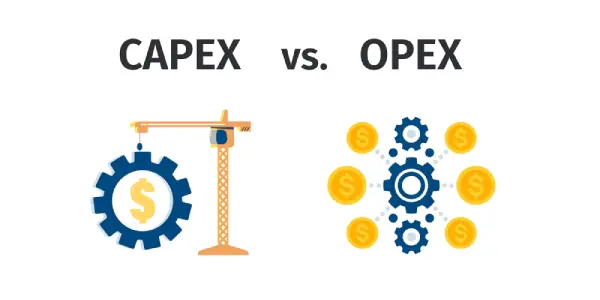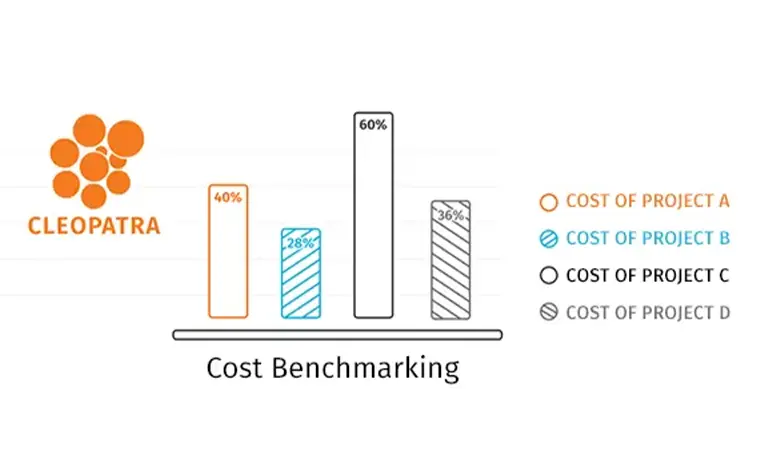
Every project begins with a decision: how will we spend our money to get the best possible return? In project management, that question often comes down to balancing Capital Expenditures (CapEx) and Operational Expenditures (OpEx). It might sound like simple accounting terminology, but in reality, understanding the difference between these two can make or break a project’s success.
Why does it matter? Because the way organizations plan, monitor, and manage CapEx and OpEx determines not just whether a project stays on budget, but whether it truly creates long-term value.
At Cleopatra Enterprise, we help organizations make these financial decisions with confidence. Our integrated capital project management software can connect CapEx and OpEx across the entire asset lifecycle to turn cost data into business case decision-making.
Understanding CapEx and OpEx
Before we dive into why these terms matter, let’s clarify what they actually mean. CapEx and OpEx represent two very different types of spending, each with its own purpose, timeline, and financial implications.
CapEx: Capital Expenditure
Capital Expenditures (CapEx) are the big investments; money spent to build, acquire, upgrade, or extend the life of physical assets. Think of building a refinery, purchasing heavy machinery, or developing new infrastructure. These expenditures are designed to create value for years to come.
CapEx projects usually come with high upfront costs and long payback periods. Rather than being fully expensed in the year they occur, they are capitalized; spread out over the useful life of the asset. The goal is to generate sustainable returns and improve the organization’s long-term capacity.
For example, if a company builds a new production facility, that’s CapEx. It’s not just about spending; it’s about investing in the future.
OpEx: Operational Expenditure
Operational Expenditures (OpEx), on the other hand, cover the ongoing costs of running that facility once it’s built. Think of energy bills, maintenance, staff wages, consumables, software licenses, and so on.
OpEx is all about keeping operations efficient, agile, and reliable. These costs may not create new assets, but they ensure existing ones continue to perform optimally. Without healthy OpEx management, even the best CapEx investments can quickly lose their value.
Key Differences Between CapEx and OpEx
Although CapEx and OpEx are closely linked, they serve distinct purposes in project management. Here’s a quick comparison:
| Aspect | Capital Expenditure (CapEx) | Operational Expenditure (OpEx) |
|---|---|---|
| Purpose | Long-term investment in assets | Day-to-day operating expenses |
| Accounting treatment | Capitalized and depreciated over time | Fully expensed in the period incurred |
| Examples | Construction, machinery, new technology | Maintenance, utilities, payroll rent |
| Goal | Grow capacity and create future value | Maintain efficiency and performance |
Table 1. A CapEx vs OpEx comparison
Therefore, CapEx builds the future, while OpEx sustains the present. Both are critical and must be managed with care.
The Importance of CapEx and OpEx in Project Management
In the world of project management, CapEx and OpEx don’t exist in isolation. They’re two sides of the same coin, influencing each other throughout the project lifecycle.
A well-executed CapEx project might reduce future OpEx costs. For example, by using energy-efficient equipment or automation technologies that lower maintenance needs. Conversely, a poorly planned CapEx investment can increase OpEx later through higher maintenance, downtime, or inefficiencies.
This is why successful organizations don’t just focus on the initial spend but also focus on the total cost of ownership (TCO). Understanding how CapEx decisions affect OpEx over time enables better lifecycle cost management and long-term profitability.
At Cleopatra Enterprise, we see this every day with our clients. By connecting CapEx and OpEx in one integrated platform like Cleopatra’s project controls software, they gain the full picture of cost performance, leading to smarter investment decisions and more predictable outcomes.
Balancing CapEx and OpEx for Optimal Project Value

Finding the right balance between CapEx and OpEx is both an art and a science. Invest too heavily in CapEx, and you risk locking up capital in assets that take too long to generate returns. Focus too much on minimizing OpEx, and you might underinvest in the future, have more inefficiencies, and potential outages.
The key lies in integration: seeing CapEx and OpEx not as separate financial silos, but as interdependent forces shaping a project’s success.
Tools like Cleopatra Enterprise make that possible by unifying cost data across every phase, from feasibility and design to operations and decommissioning. This holistic view allows teams to model lifecycle costs, forecast maintenance expenses, and assess long-term performance impacts before decisions are made. When organizations achieve this balance, they unlock financial efficiency as well as resilience. Projects are then compliant and on budget, but also strategically optimized for value and sustainability.
Conclusion
CapEx and OpEx are more than accounting categories; they’re strategic levers for long-term success. Understanding how they interact helps project teams make smarter investment choices, minimize waste, and ensure assets deliver their full potential.
By managing both holistically, organizations gain a deeper understanding of where their money goes, and more importantly, what it achieves. To further explore how these costs are classified and analyzed, read our insights on Cost Accounting.
At Cleopatra Enterprise, we empower that balance. Through integrated project controls and data-driven insights, we help clients plan, execute, and optimize their project lifecycle decisions with precision and confidence.
Effective project cost tracking is essential to staying on budget and making informed decisions. This guide explains how…
Operational efficiency in project management is about achieving more with less: delivering projects on time and within budget…
Related resources

What Does OPEX Mean?
Operating expenses (OPEX) are the recurring costs required to run and maintain assets, systems, or projects. In capital projects and turnarounds, OPEX covers expenses such as labor for maintenance, consumables during shutdowns, and ongoing utility costs. Tracking and managing OPEX is crucial for project teams to maintain budget control, optimize…
Read blog article
Cost Benchmarking in Capital Projects: Definition, Benefits, and Examples
In today’s ever-changing markets, large capital projects face increasing pressure to deliver on time and within budget. Project teams need tools and strategies that enable them to compare their performance against proven standards and identify opportunities for improvement. Cost benchmarking is key to achieving this. By systematically comparing project data…
Read blog article